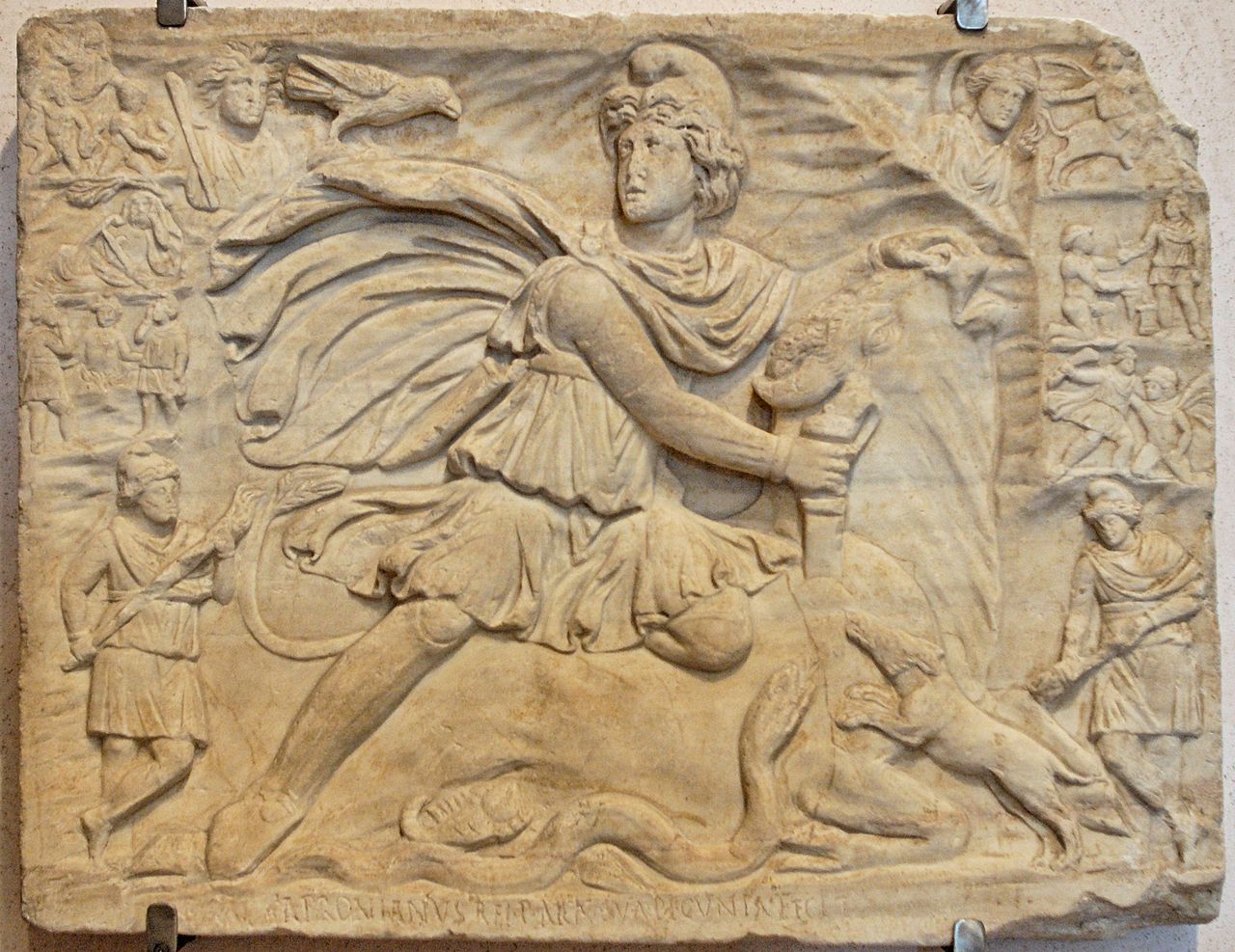
CIMRM 650 - Tauroctony. Nersae/Nesce, Italy.

CIMRM entry
650.
White marble relief (H. 0.81 Br. 1.04 D. 0.08). found at Nesce, community Pescorocchiano in the Abruzzes "nel fondo del Barone Coletti, in località S. Silvestro". At first sold to the antiquary Veneziani at Rome and later through the intercession of the Sopraintendenza alle Antichita transported to the Mus. Naz. of the Therms at Rome.
Mancini, Abruzz. = ACSA 1931 with fig.; Vermaseren, in Mnemosyne (Studia archaeologica G. van Horn oblate), 1951, 293 and Pl. XXIII, 7 (detail). See fig. 181.
In the centre Mithras slaying the bull, whose tail ends in three ears. Dog and snake near the wound, scorpion and raven on the usual places. In the upper corners the busts of Sol (l) with whip and of Luna (r) with crescent and quiver. On either side of the bull-killing Cautes (l) and Cautopates (r) in Oriental dress; cross-legged. Above them three scenes separated by horizontal rims are represented. From top to bottom left:
1) Standing person in cloak (Jupiter) behind two naked Giants, one of whom he grasps by his hair. With the other hand he slings his lightning. Both Giants are kneeling.
2) Reclining figure, dressed in long cloak. He supports his head with his l.h.; in the r.h. he holds the harpe (Saturnus) . Above him a branch of a tree.
3) Naked Mithras in Phrygian cap, born from the rock. On either side a person, holding their hands against their faces.Left:
1) Mithras riding on the bull's back, clasping its horns with his l.h.
2) On either side of a small altar the standing Mithras and the kneeling, naked Sol. Both hold a knife in their r.h .; Sol lays his l.h. on the outstretched l.h. of Mithras.
3) Mithras walks up to a kneeling figure, who is dressed in a billowing shouldercape only. Mithras holds an indefinable object (a club?) in his upraised r.h.On the lower-border an inscription :
651.
Apronianus rei p(ublicae) ark(arius) sua pecunia fecit.After comparison with the inscr. No. 647, and No. 648 one can assume, that this relief originally comes from the same Mithraeum, which was in use at Nersae round 172 A.D. Apronianus was moreover an ardent worshipper of Isis and Serapis (cf. CIL IX 4112).
| Tweet |